What is a cleanroom fogger?
A cleanroom fogger is a specialized device used in controlled environments to generate ultra-fine fog for airflow visualization and contamination control.
It helps detect airflow patterns, turbulence, and leaks in cleanrooms, ensuring compliance with industry standards in pharmaceuticals, semiconductor manufacturing, and biotech labs.

By producing a consistent and uniform mist, the fogger makes invisible air currents visible, allowing engineers to optimize ventilation and filtration systems.
This technology is essential for maintaining high-purity environments where even microscopic particles can affect product quality and safety.
How does a cleanroom fogger work?
A cleanroom fogger operates by generating ultra-fine fog particles that disperse into the air, making invisible airflow patterns visible. It typically works using the following steps:

Water or Liquid-Based Fog Generation
The fogger uses deionized water, purified water, or a special fogging solution to create mist. Some advanced models use ultrasonic or vaporization technology for ultra-fine particle production.
Fog Dispersion
Once the fog is generated, it is released into the cleanroom environment, where it spreads evenly without contaminating the air.
Airflow Visualization
The fine fog particles follow the air currents, revealing airflow direction, turbulence, and any unwanted leaks or dead zones in the cleanroom.
Detection & Optimization
Engineers and technicians analyze the fog movement to identify air leaks, pressure imbalances, or inefficient ventilation, allowing them to fine-tune the cleanroom’s filtration and air control systems.
Safe & Non-Contaminating
High-quality cleanroom foggers ensure they dissipate completely without leaving any residue, making them ideal for pharmaceutical, semiconductor, and biotech applications.
What are the key features of the cleanroom fogger?
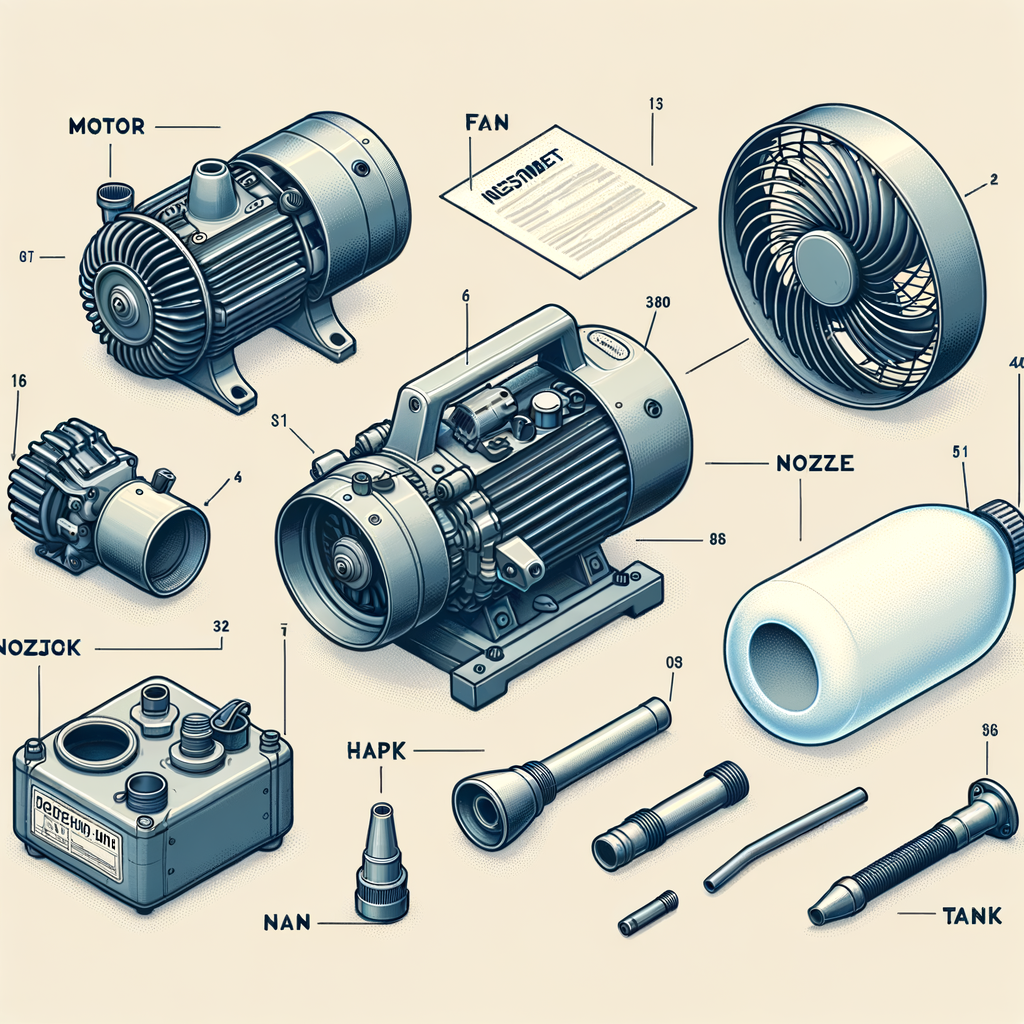
- Flexible Control Adjustable fog volume, density, and airflow via a built-in fan, allowing control from 0 to 100% output.
- Ultrapure Fog Produces dense, white fog using DI (Deionized) or WFI (Water for Injection) water, ensuring high purity.
- Portability Lightweight and portable design, making it easy to move and use in various cleanroom environments.
- Remote Operation Wireless remote control for device functionality, fan speed adjustment, and fog output.
- Sanitization Can be sanitized with 6% hydrogen peroxide, calcium hypochlorite, or isopropyl alcohol.
- Fine Particle Size Generates fog with droplet sizes ranging from <0.3 µm to 1.0 µm, ensuring minimal interference with cleanroom operations.
- Long Operation Time Can run continuously for up to 20 minutes or operate intermittently for 2-5 hours with a full tank and charged battery.
- High Visibility Visible fog distance of 7-14 meters, making airflow patterns easy to observe.
- Stainless Steel Construction Made from AISI 316L stainless steel, ensuring durability and resistance to corrosion.
- Compliance Suitable for ISO Class 5 environments and compliant with ISO 14644-3 standards for cleanroom testing.
Applications of cleanroom fogger – applied physics
Cleanroom foggers play a crucial role in maintaining sterile environments through the application of precise physical principles. These devices generate ultra-fine particles of disinfectant solution, typically ranging from 1-5 microns in size, which remain suspended in the air due to their small mass and aerodynamic properties.
The fog particles follow thermal currents and Brownian motion patterns, allowing them to reach and settle on all surfaces within the cleanroom, including difficult-to-access areas.
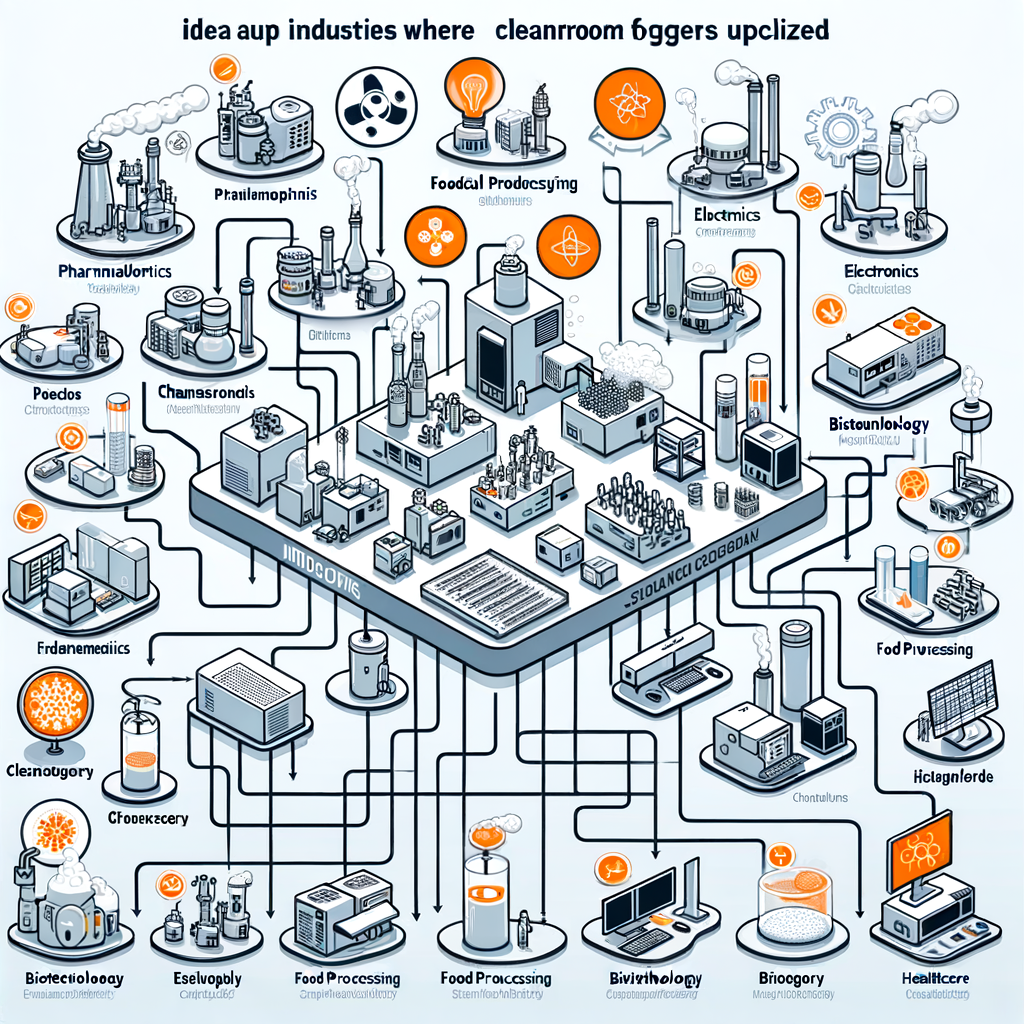
The effectiveness of these foggers relies on the physical concepts of fluid dynamics, particle dispersion, and surface tension, ensuring uniform coverage and maximum contact time between disinfectant and surfaces.
In modern cleanroom facilities, foggers are often integrated with automated monitoring systems that use advanced sensors to optimize particle distribution and maintain ideal humidity levels based on real-time environmental data
In which industries are the cleanroom foggers commonly used?
Cleanroom foggers are commonly used in industries where absolute sterility is critical, such as pharmaceuticals and biotechnology, ensuring that products and processes remain free from contamination.
They also play an essential role in medical device manufacturing, where even minute particulates can impact product safety and efficacy.
In the electronics and semiconductor sectors, foggers help control the environment to prevent damage from contaminants during sensitive assembly processes.
Additionally, the aerospace industry relies on these systems to maintain the stringent cleanliness required in components and assembly areas
Emerging applications in food manufacturing and research laboratories further illustrate the versatility and importance of cleanroom foggers in modern controlled environments.
How does the cleanroom fogger support USP 797 compliance?
1. Visualization of Airflow Patterns
- Helps verify the uniformity of airflow in cleanroom environments
- Enables detection of turbulent locations and dead spots
- Assists in confirming room-to-room airflow balance
2. Environmental Quality Monitoring
- Supports compliance with ISO Class 5 environment requirements
- Helps validate air cleanliness levels and pressure differentials
- Enables verification of proper air change rates
3. Certification Support
- Aids in required 6-month cleanroom recertification processes
- Helps validate air quality and airflow within compounding areas
- Supports documentation of environmental controls
4. Safety and Contamination Prevention
- Uses only DI water, sterile water, or WFI water for pure fog generation
- Leaves no contamination behind after smoke studies
- Helps maintain sterile conditions during testing
5. Facility Design Validation
- Assists in verifying HEPA filtration effectiveness
- Helps evaluate proper room pressurization
- Supports assessment of overall cleanroom design efficiency
6. Quality Assurance
- Enables visual verification of environmental controls
- Supports compliance with FDA and USP 797 guidelines
- Helps maintain patient safety standards through proper environmental monitoring
What are the benefits of using the cleanroom fogger in ISO suites?
Enhanced Environmental Control
Generates ultra-fine disinfectant particles that uniformly reach all surfaces, ensuring thorough decontamination.
Improved Air Quality and Sterility
Helps maintain a contaminant-free environment by ensuring effective distribution, which is critical to ISO suite standards.
Efficient Recertification Support
Assists in visualizing airflow and determining room pressurization, thereby streamlining recertification and compliance checks.
Compliance Assurance
Supports adherence to strict ISO standards and regulatory guidelines by maintaining controlled, sterile conditions.
Cost-effectiveness
Reduces labor-intensive cleaning practices and minimizes downtime, ultimately lowering operational costs
Technical Specifications of the Crf2 cleanroom fogger
| Specification | Value/Range | Description |
|---|---|---|
| Fog Output | 0.26 cubic meters per minute (9 CFM) | It provides a consistent and steady fog flow that is ideal for airflow visualization in small-scale setups. |
| Fog Density | 57 ml per minute | Ensures sufficient fog concentration for effective visualizing of airflow patterns. |
| Operation Duration | Approximately 50 minutes | Typical continuous fog generation per water fill cycle |
| Water Volume Capacity | 3.75 liters | Designed to operate with DI water, sterile water, or water for injection within a single cycle. |
| Piezo Devices | 9 high-performance piezo transducers | Generates the fog by ultrasonic mechanism, ensuring uniform droplet production |
| Droplet Size | 8-10 microns | Optimized for creating a visible yet safe fog that evaporates properly within airflow streams. |
| Visible Fog Distance | Around 7-8 feet | Provides a clear visual representation of airflow in controlled environments |
| Power Requirements | 110 VAC or 220 VAC | Flexible power options to meet various facility standards. |
| Design and Portability | Compact, lightweight, portable | Facilitates ease-of-use in fume hoods, glove boxes, and small cleanroom applications. |
What is the output capacity of the crf2 cleanroom fogger?
The CRF2 Cleanroom Fogger boasts an output capacity of 0.26 cubic meters of fog per minute, which translates to approximately 9 cubic feet per minute (CFM).
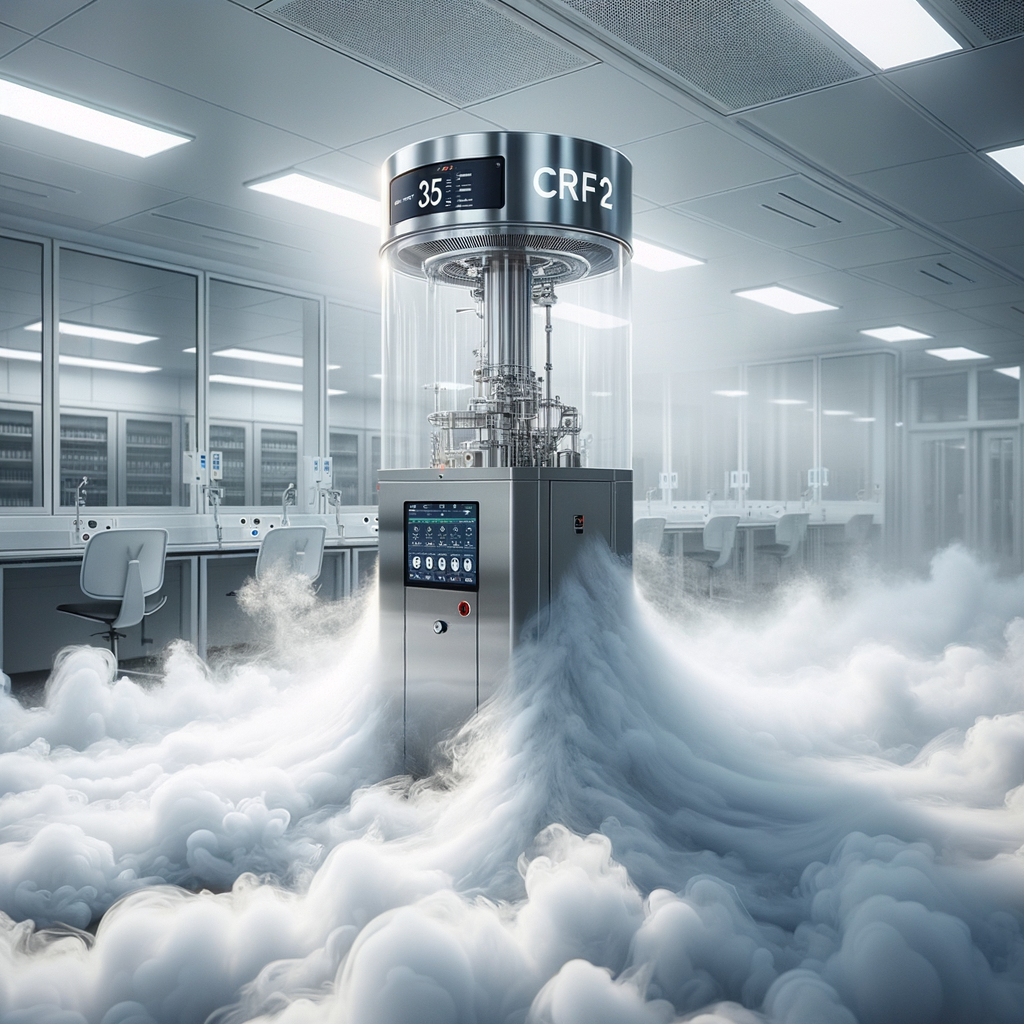
This consistent and robust fog production makes it well-suited for visualizing airflow patterns, identifying potential contamination risks, and ensuring proper cleanroom protocols are maintained.
How does the cleanroom fogger operate in terms of cubic meters per minute?
Steady Output Rate
The fogger operates at an output capacity of 0.26 cubic meters per minute, ensuring consistent fog generation.
Ultrasonic Mechanism
This output is facilitated by high-performance piezo transducers, which use ultrasonic vibrations to produce a fine mist.
Efficient Airflow Visualization
The controlled output helps in visualizing airflow patterns by dispersing the fog uniformly across the cleanroom.
Uniform Distribution
The steady emission rate guarantees that the fog reaches all areas of the room, aiding in the detection of turbulence and dead zones.
Optimized for Recertification
The precise output supports facility evaluations and recertification processes by providing reliable, measurable data on air movement within ISO-controlled environments
What are the compatibility features of the cleanroom fogger with fume hoods and glove boxes?
Designed for confined spaces, the fogger’s compact and portable design makes it ideal for use in fume hoods and glove boxes, where space is limited and precise airflow visualization is essential.
It utilizes DI, WFI, or sterile water to generate a pure fog without introducing contaminants, ensuring compatibility with sensitive environments such as fume hoods and glove boxes.
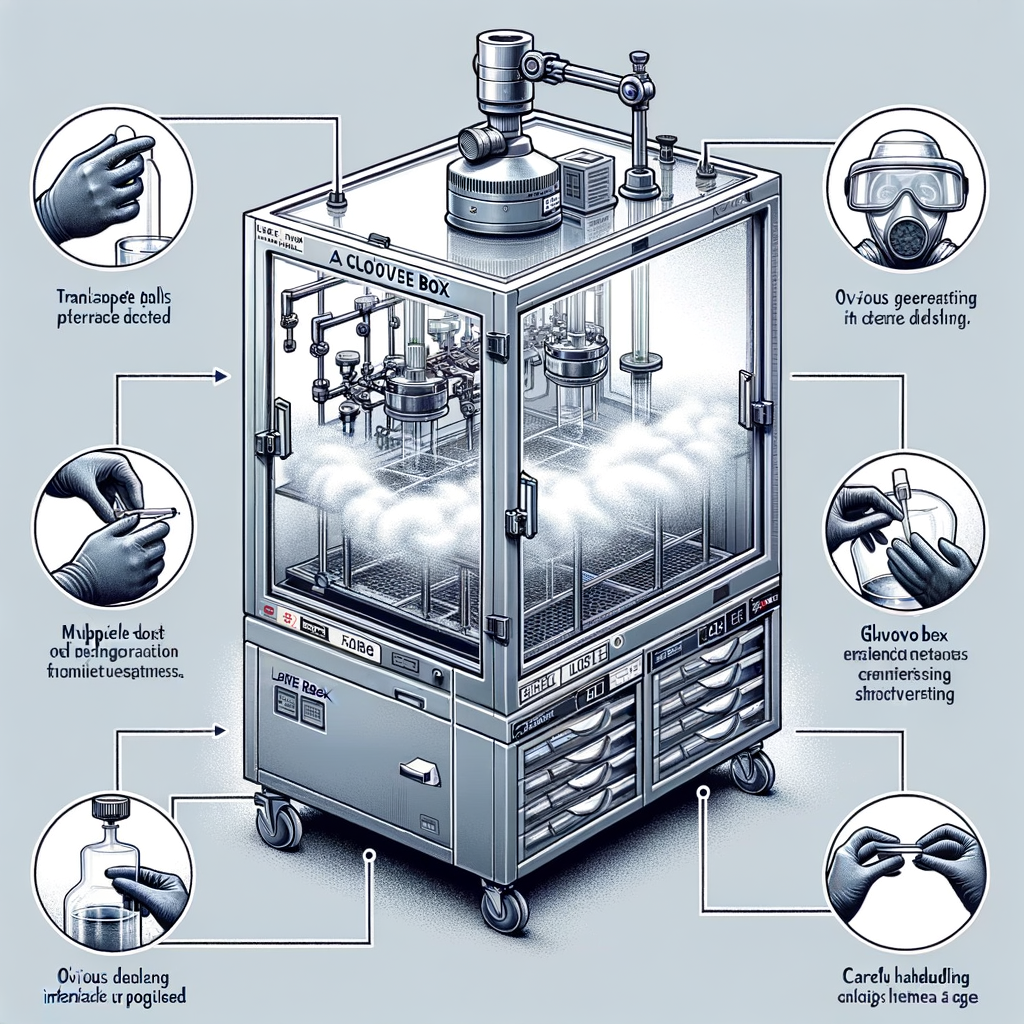
The system offers a consistent, controlled fog output—typically around 0.26 cubic meters per minute for models like the CRF2—which is optimized for the smaller volumes encountered in these applications.
Quick refilling, visual water level indicators, and easy on/off operation streamline its use in these settings, reducing downtime during repeated testing in pharmaceutical compounding and laboratory environments.
Compliance with standards like USP 797 and ISO guidelines ensures that the fogger's operation aligns with the rigorous quality and safety requirements necessary for fume hoods and glove boxes.
Advantages of using the cleanroom fogger from applied physics
Applied Physics Inc. specializes in cleanroom foggers designed for meticulous airflow visualization and contamination control in controlled environments. Here's a breakdown of the advantages of using their products:
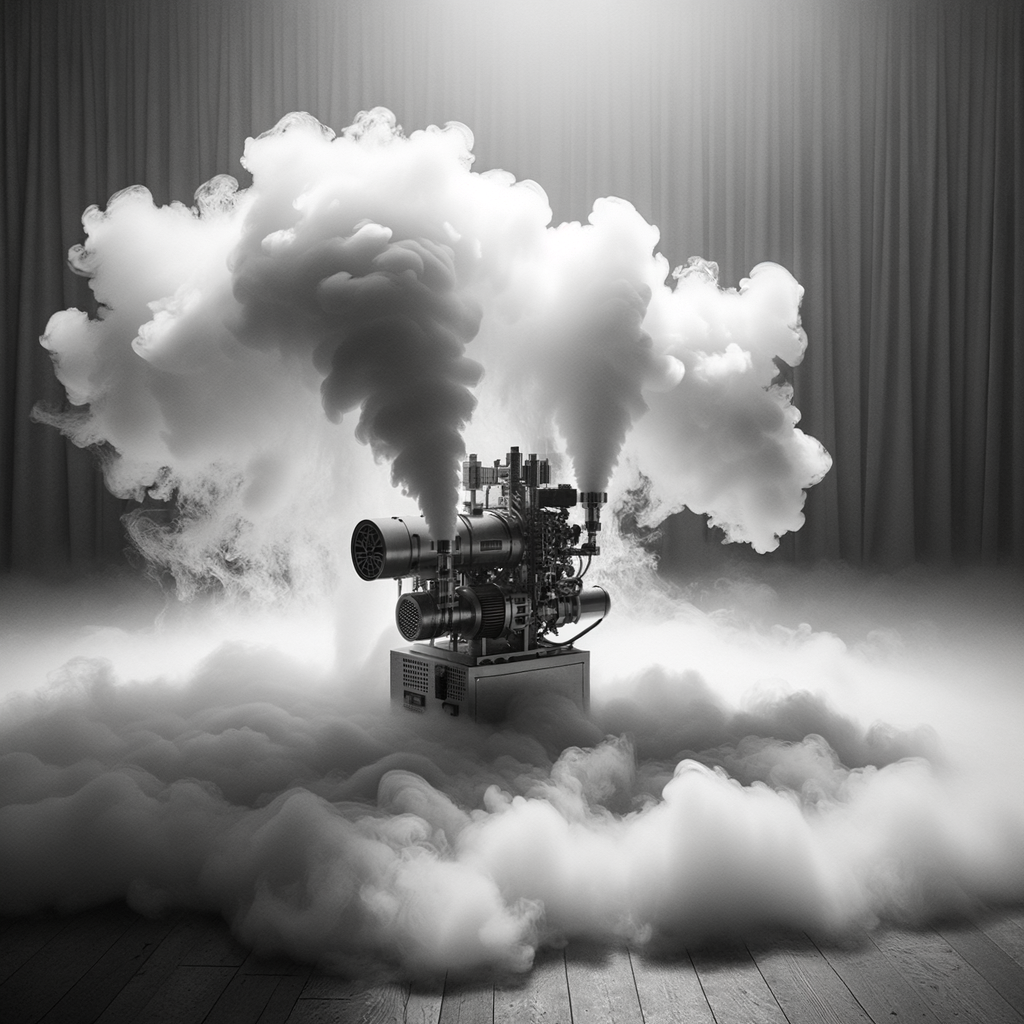
High Fog Density and Volume
Applied Physics foggers, such as the CRF2 and CRF4, are engineered to produce a dense fog output, with the CRF2 generating 0.26 cubic meters per minute at 57 ml fog density, and the CRF4 exceeding this with 1.25 cubic meters per minute at 187 ml fog density.
This dense fog enhances the visualization of airflow patterns, making it easier to identify turbulent areas and dead zones within cleanrooms, fume hoods, and glove boxes.
Long Fog Duration
The CRF2 offers approximately 50 minutes of continuous operation, while the CRF4 provides around 45 minutes. This extended runtime minimizes interruptions for refilling, enabling more efficient testing and validation procedures.
Use of Pure Water
Applied Physics foggers utilize only DI water, sterile water, or WFI water, ensuring the generated fog.
What makes the cleanroom fogger a low-cost solution?
Cleanroom foggers represent a low-cost solution due to a combination of factors that reduce both capital and operational expenditures.
They require a lower initial investment than many traditional cleanroom monitoring instruments, such as sophisticated particle counters, which often need expensive calibration and specialized filters.
Additionally, the foggers use inexpensive, readily available consumables like distilled or deionized water, which further minimizes recurring costs.
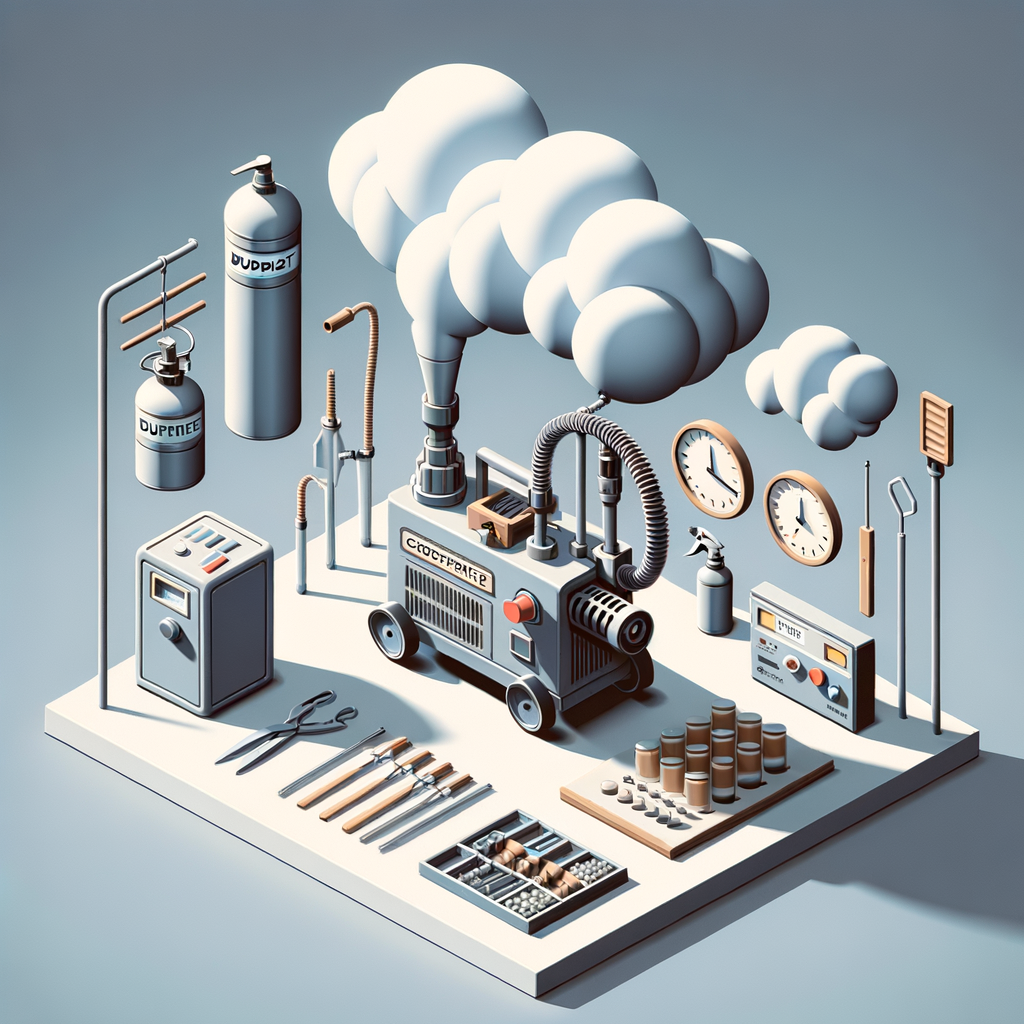
Their quick setup and efficient operation lead to reduced downtime, allowing for rapid visualization of airflow and contamination risks that ultimately save both time and money.
Finally, the versatility of a cleanroom fogger—usable across various applications like HEPA filter testing and airflow visualization in confined spaces—combined with simplified, minimal maintenance needs, contributes significantly to its cost-effectiveness in maintaining sterile environments.
How does the cleanroom fogger improve air quality?
Cleanroom foggers generate a fine, visible mist using purified water that illuminates airflow patterns in controlled environments. This visualization helps operators quickly identify areas of turbulence or stagnation that may harbor contaminants.
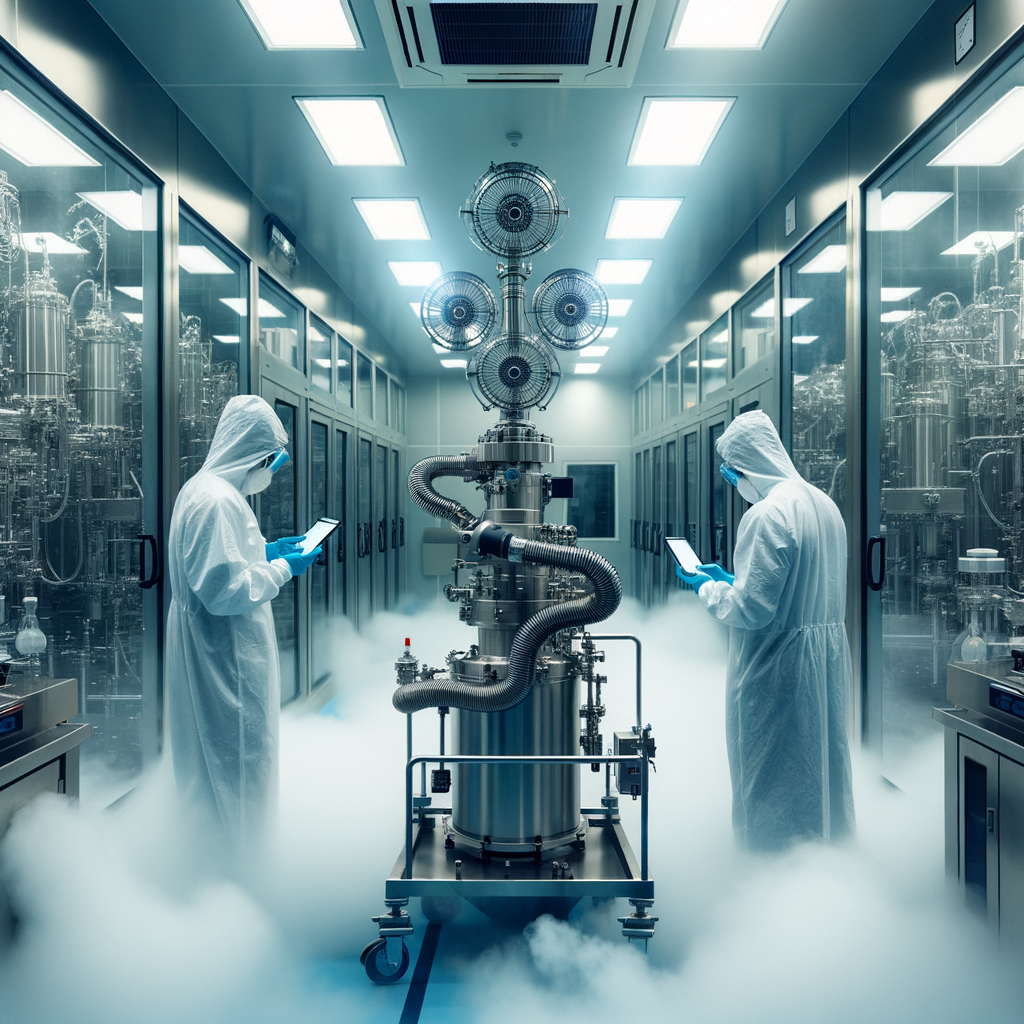
Timely adjustments to ventilation or filtration systems can then be made, ensuring optimal air circulation and effective contaminant removal. As a result, the overall air quality is maintained at high standards necessary for sensitive processes
What is the fog density produced by the cleanroom fogger?
The fog density produced by a cleanroom fogger varies depending on the specific model and its intended applications. For instance, the CRF2 Cleanroom Fogger, designed for smaller spaces like fume hoods and glove boxes, produces a fog density of 57 ml per minute.
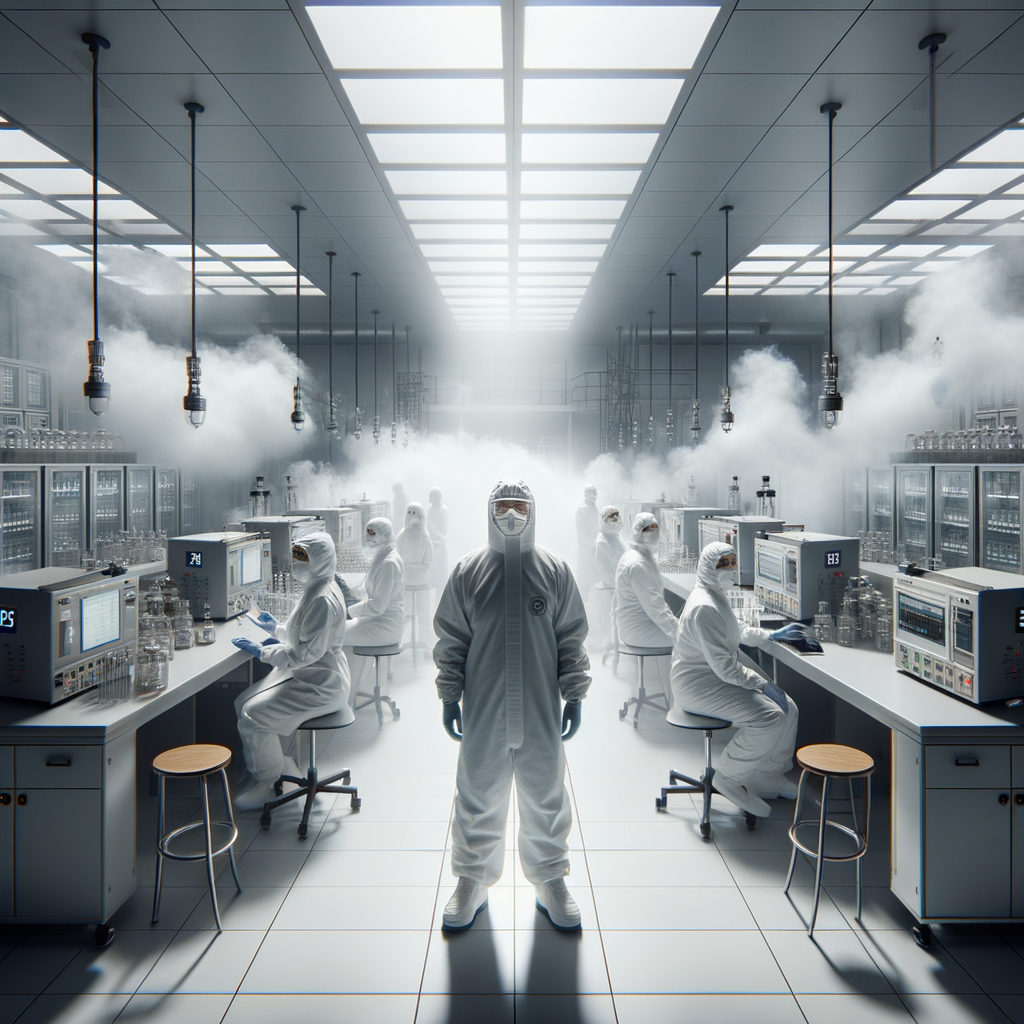
In contrast, the CRF4 Cleanroom Fogger, geared towards larger areas and more comprehensive airflow visualization, boasts a higher fog density of 187 ml per minute.
This difference in fog density allows users to select the most suitable model based on their specific needs, ensuring clear visualization of airflow patterns and potential contamination risks in varying cleanroom environments
Comparing Different Models of Cleanroom Fogger
Cleanroom foggers come in various models, each designed for specific applications and performance levels. Below are the main types:
Ultrasonic Foggers
Use high-frequency vibrations to generate ultra-fine mist, ideal for sensitive cleanroom environments.
Vaporization Foggers
Heat-based models that create a visible fog by converting liquid into vapor, suitable for airflow visualization.
Liquid Nitrogen Foggers
Produce dense, low-temperature fog, often used in high-precision industries for airflow testing.
High-Capacity Foggers
Feature adjustable fog density and extended runtime, making them suitable for large clean rooms.
Compact Foggers
Designed for small labs, offering quick and efficient fogging for localized airflow visualization.
Advanced Automated Foggers
Include remote control, programmable settings, and enhanced safety features for high-tech cleanroom applications.
Choosing the right model depends on fog output, particle size, and application requirements to ensure the best cleanroom performance
What are the differences between the AP35 ultrapure fogger and other models?
The AP35 Ultrapure Fogger distinguishes itself from other models through its high fog density, volume, and extended visual airflow distance, making it ideal for larger cleanrooms and critical applications. It produces a denser fog at 571 ml per minute, significantly higher than other models
How does the cleanroom fogger compare in terms of output and efficiency?
The cleanroom fogger boasts a consistent output rate of 0.26 cubic meters per minute, ensuring reliable airflow visualization throughout controlled environments.
Its efficiency is enhanced by a high-performance ultrasonic mechanism that creates ultra-fine droplets for precise mapping of air movement.
This output allows for immediate identification of dead zones and turbulent areas, optimizing facility performance.
Compared to traditional airflow verification methods, the fogger minimizes both setup time and energy consumption.
Its streamlined design and low maintenance requirements further boost operational efficiency.
Overall, the balance of high output and energy-efficient performance makes this fogger an ideal tool for maintaining stringent cleanroom standards.
Maintenance and Operation of the fogger – applied physics inc
Operation:
- Preparation: Before use, ensure the fogger is clean and filled with the appropriate fluid, typically distilled or deionized water.
- Power Up: Connect the fogger to a suitable power source, ensuring voltage compatibility.
- Priming (if applicable): Some models may require a brief priming period to initiate fog production.
- Fog Generation: Adjust fog volume and density controls as needed for optimal visualization.
- Operation Time: Monitor fluid levels and expected run times to prevent overheating or damage.
- Shut Down: After use, turn off the fogger and allow it to cool before storing.

Maintenance:
- Regular Cleaning: Clean the fogger's exterior and fog output nozzle regularly using a soft cloth and a mild cleaning solution.
- Fluid Tank Maintenance: Empty and rinse the fluid tank after each use to prevent residue buildup.
- Filter Replacement: If equipped with filters, replace them at recommended intervals or as needed to maintain optimal performance.
- Visual Inspections: Periodically inspect the fogger for any signs of damage, wear, or loose connections.
- Professional Servicing: While routine maintenance is typically straightforward, refer to the manufacturer's guidelines for more complex troubleshooting or repairs.
Conclusion
Cleanroom foggers are essential tools for maintaining contamination-free environments in industries like pharmaceuticals, biotechnology, and semiconductor manufacturing. These devices help visualize airflow, detect leaks, and ensure compliance with strict cleanroom standards.
Applied Physics Inc. offers advanced fogging solutions that provide uniform mist distribution, adjustable fog density, and high-precision airflow analysis. By selecting the right fogger model, cleanroom operators can optimize air filtration, reduce contamination risks, and enhance overall workplace safety.
FAQs
What is the primary function of a cleanroom fogger?
A cleanroom fogger generates ultra-fine mist to visualize airflow patterns, detect air leaks, and assess ventilation efficiency in controlled environments.
What makes Applied Physics Inc.'s cleanroom foggers unique?
Applied Physics Inc. designs high-precision foggers with nano-particle technology, ensuring ultra-fine mist for accurate airflow analysis without contaminating the cleanroom.
What are the different types of cleanroom foggers available?
Cleanroom foggers come in ultrasonic, vaporization, and liquid nitrogen models, each suited for different airflow testing and cleanroom sizes.
How does a cleanroom fogger help in contamination control?
By revealing airflow movement, cleanroom foggers help detect dead zones, turbulence, and leaks, allowing engineers to optimize air filtration and maintain contamination-free environments.
Where are cleanroom foggers commonly used?
Cleanroom foggers are widely used in pharmaceutical manufacturing, semiconductor production, biotech labs, aerospace, and medical device industries where ultra-clean environments are required
